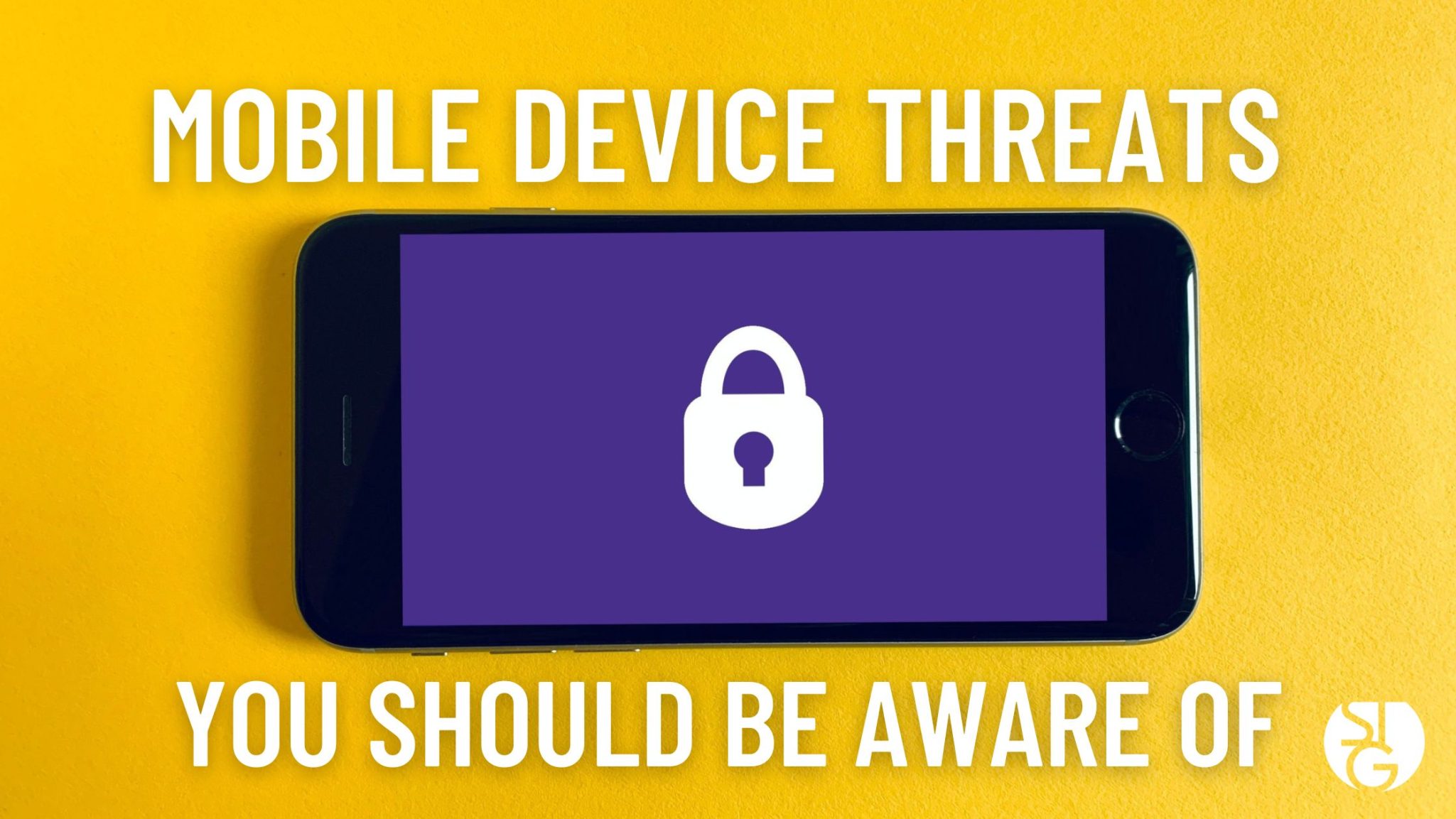For the most part, smartphones and tablets are the devices we prefer to communicate, search the web and use apps with. The reason being, because they’re so portable. With that, we need to be careful. So here are the top 5 mobile device threats you should be aware of.
Mobile devices are taking over because more and more they are able to perform the same tasks as computers.
For instance, according to Microsoft, up to 80% of the work is now completed on mobile devices in many corporate firms. Additionally, rather than using a desktop computer, more than half of all web searches are now made through a mobile device.
The backlash of everyone using their mobile devices more frequently over the past several years is the threat of a hack. Hackers are starting to develop mobile malware and other threats to compromise mobile devices that hold just as much sensitive data as PCs.
In 2020, 2.5 million users unknowingly downloaded several mobile adware apps, and 36.5% of businesses were affected by mobile malware.
Mobile Device Threats
When it comes to security, it’s crucial to start treating mobile devices the same way you do laptops. Smartphones and tablets require the same security measures in place including:
- Antivirus/anti-malware
- DNS filtering
- OS and app updates that are automatic
- Backup management
You need to be aware of the most common mobile device dangers that might expose or compromise your data. Here is a list of all of them.
1. Apps with Hidden Malware
At first look, it might be challenging to distinguish between a free software that is authentic and one that contains malware.
Scammers use the same bright visuals and may even have a suspiciously high rating on the app store. The app may even work when you download it too.
However, malware has the ability to remain hidden and infect a device as soon as the software loads. Once you install it on your phone or tablet, many of these applications will automatically disguise themselves by utilizing a standard system app’s icons; like settings or calendar.
All the same kinds of malware that can infect a computer, such as ransomware, adware, spyware, trojans, and more, can also attack mobile devices.
2. Unsafe Communication
Have you texted someone or used an app to send a password or your credit card information? Do you know if these communications have been encrypted?
Many people use their mobile devices to communicate in different ways without ever knowing the safety of those ways. If you send sensitive information without encryption, a hacker can easily get hold of it.
3. Unprotected Public Wi-Fi
People have known for a long time that public Wi-Fi is not safe, but they still use it when they can. They want to save time or get a faster connection on their phones.
75% of people who use public Wi-Fi say they check their email. People also sign into apps, even ones that are sensitive, like online banking, and shop online using their credit cards.
If you use public Wi-Fi, you are very likely to be attacked by a “man in the middle.” This is when a hacker connects to the same network and looks for people who send and receive messages without security. Then, they can get ahold of any data they are sending.
Using a VPN app to encrypt your communications is one way to connect to public Wi-Fi safely.
4. Charging your Phone at a Public USB Port
Public USB charging stations are another place where your phone can be stolen. These are often nice to see, especially when your battery is low. Hackers, on the other hand, can put malware on public USB charging ports and set up fake charging stations in public places.
Then, when you plug in your USB cable to charge your device, the malware copies all the information on your phone and/or puts malicious code on it. USB cables aren’t just for charging, you know. They can also be used to send data.
Instead of charging with a public USB port, it’s best to use a power adapter that plugs into an outlet. If USB charging is your only option, you can also buy a “charge-only” USB cord.
5. Devices Not Up-to-Date
About 40% of Android devices use old operating systems that don’t get important security updates anymore.
If you don’t keep your mobile device up-to-date, it’s easier for hackers to use an exploit that takes advantage of a code flaw in the OS or one of the apps you have.
Many companies don’t keep track of how many of their employees’ work devices are running the latest operating systems. This makes their networks more vulnerable to being broken into.
You should make sure that all of your apps and your OS are always up to date, since many of these updates include important security patches.
Ask Us About How to Keep your Mobile Devices Safe
Mobile devices do so much computing work these days that it’s important to make sure they’re safe. Contact us to talk more about solutions for mobile security and management.
If you’d like to find out more about what’s new in the tech world, make sure to follow our blog!
Click here to schedule a free 15-minute meeting with Stan Kats, our Founder, and Chief Technologist.
STG IT Consulting Group proudly provides IT Service in Greater Los Angeles and the surrounding areas for all of your IT needs.





